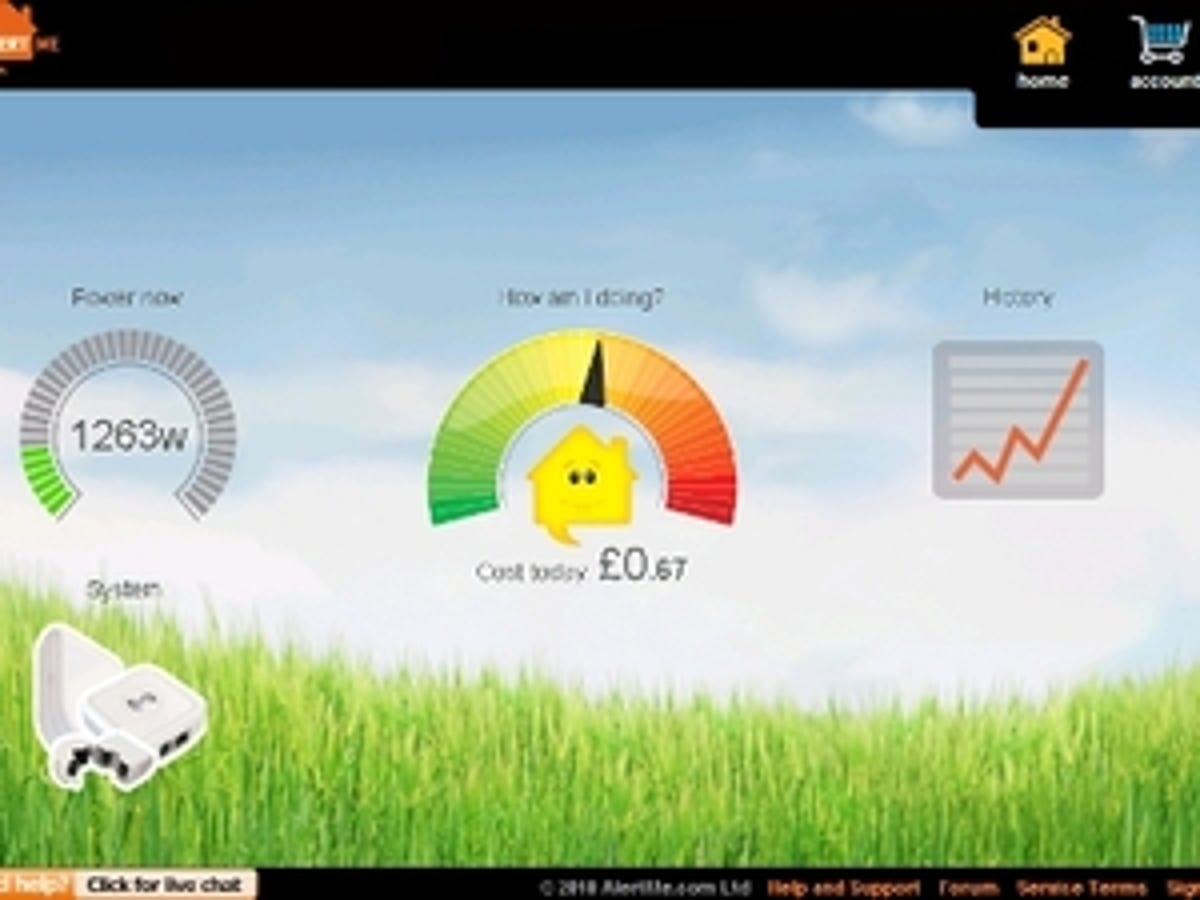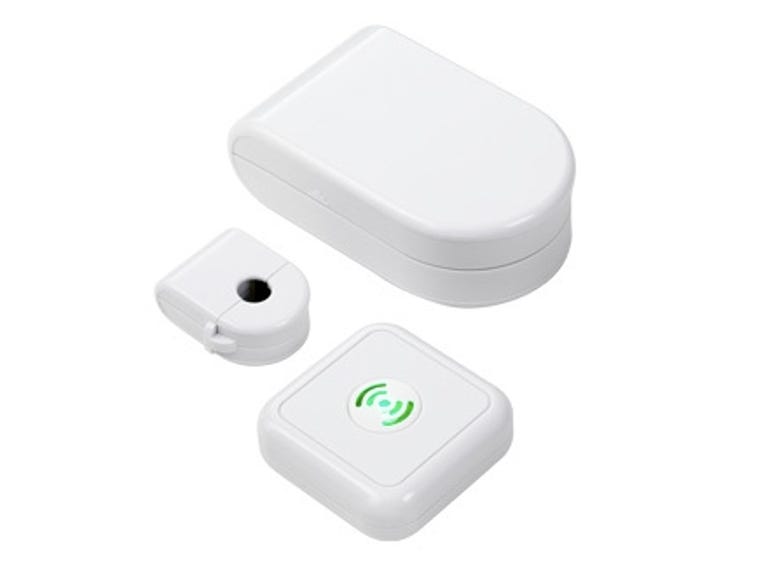 Why You Can Trust CNET
Why You Can Trust CNET AlertMe Energy review: AlertMe Energy
The AlertMe Energy system allows you to monitor your home's energy use via a PC or smart phone. It's very easy to set up and the online interface for viewing your energy consumption is excellent. It might be a while before you claw back your investment through energy-bill savings though
AlertMe Energy is an Internet-enabled energy-monitoring system for your home that also happens to be the first self-installed system compatible with Google's free PowerMeter service. The kit is available for £49 from AlertMe's Web site, but you also need to sign up to a £1.99-per-month, 12-month contract.
The Good
The Bad
The Bottom Line
Simple to set up
The AlertMe Energy pack consists of a wireless power meter that you connect to your electricity meter, a transmitter that you connect to the power meter, and a receiver hub that you connect to an Ethernet port on your broadband router. The power meter communicates with the hub to send data back to the secure AlertMe Web site. You can then log into the Web site from any Internet-connected PC or smart phone and view the power usage in your home.
The system is pretty easy to set up. Firstly, you need to attach the power meter to any of the cables entering your electricity meter. This is easier than it sounds, as the power meter simply clamps over the cable and clicks into place. You then connect the power meter to the transmitter device, which runs off two D batteries. It's worth mentioning that the transmitter unit is rather large, so, if your electricity meter is tucked away in a small cabinet, the transmitter may not fit neatly inside.
Once you've got the power meter up and running, the next step is to set up the receiver hub. This has to be powered from the mains and also needs to be connected to your router via an Ethernet cable, as it doesn't have Wi-Fi support.

Once the receiver hub is connected, you then need to go to the AlertMe site and start the configuration process. This takes quite a while to complete, as the site communicates back and forth with the receiver hub to update the software in both the hub and the power meter. As you're provided with step-by-step instructions, however, the process isn't exactly difficult and, because everything is carried out right in your Web browser, you don't have to install any extra software.
We did experience one small glitch, though -- when we'd finished the set-up process, the site hadn't recognised our power meter. Eventually, we had to go back and set it up manually, but, again, this wasn't too complex a job.
Show me the data
Once the Web service is communicating with the receiver hub, the data gathered via the power meter is automatically sent to the Web service at regular intervals. The AlertMe Web service takes this data and displays it on its home page in a number of ways. For example, there's a 'power now' dial that shows the current number of kW your home is consuming, and a 'how am I doing?' meter that displays your energy usage for the day and the cost of the electricity you've used so far. There's also a 'history' section that displays charts of your energy usage on a daily, weekly, monthly or yearly basis. You can export these charts as CSV files and load them into a spreadsheet, to keep a permanent record of your energy use.
The home page also has a link via which you can set up the AlertMe service to pass on energy-usage data to Google, so you can use the Google PowerMeter service. This is a pretty simple energy dashboard that you can add to your iGoogle home page. Once it's set up, Google will send you a weekly email with a graph of your energy usage.
There's only a delay of about 6 seconds before changes in your energy use are registered on the AlertMe Web site, so it's pretty easy to see the difference that switching off lights, computers and other devices makes to your overall energy use. The system is also modular -- you can add extra devices to it over time. For example, you can purchase SmartPlugs for £25 each that allow you to monitor power usage at particular sockets, and also switch off them off remotely via the AlertMe Web site.
Conclusion
The AlertMe Energy kit is very easy to set up. The Web service is also simple to use and presents energy-usage information in a clear fashion that's easy to understand. When you take into account both the cost of the hardware and the online-subscription fee, however, you'll need to save a great deal of electricity to claw back your investment.
Edited by Charles Kloet
